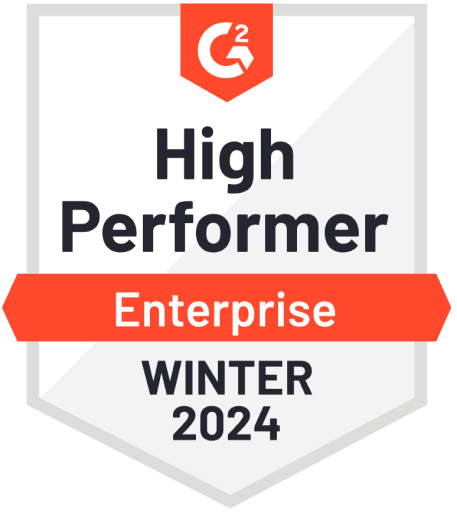What to expect from the migration to S/4HANA – and how to prepare
10mins read
Published on 18-06-2024
S/4HANA, the finance team, and you: what to expect from the SAP S/4HANA migration – and how to prepare
If you’re part of a finance team that currently relies on an SAP ERP, there are a couple of facts you need to be aware of.
1. There’s not much time left to prepare for the 2027 S/4HANA switch deadline.
2. A migration to S/4HANA is a lot more than just another mandatory IT upgrade project.
You don’t have plenty of time
Major tech implementations are difficult at the best of times. They require significant planning to ensure compatibility with affected systems and a great deal of sensitivity to the needs of your teams both in terms of system uptime and education and training.
This is particularly true for ERP migrations, which are your company’s core system of record. Changing your ERP will affect every part of your operations, particularly finance, and people will need to shift their mindset and possibly acquire new skills to adjust to the new system. For an operations-heavy department like accounts payable, this managing this change is especially critical.
Big bang or phase in?
If you’re pursuing a greenfield migration to a whole new S/4HANA implementation, you’ll need to consider the implications of SAP’s new clean core approach. Think carefully about how to standardize existing processes and eliminate customizations. Also consider how you’ll migrate your essential data and documents to the new system – and what data you’re going to leave behind for cost, compliance, and risk reasons. This might also come with some changes to your team structure and processes, and plan if staff will need to work with two systems while unmigrated historical data is still in use.
If you’re pursuing a brownfield migration – a simple “upgrade” of an existing SAP system without any major architectural changes or restarts – you’ll have to consider how you’ll navigate changes to your business processes, how your staff will respond to a sudden change to their user interfaces, and how much this will cost you in lost time (along with the disruption to normal operations caused by any tech change).
In both cases, your relationship with your tech vendors may change. Suppose you’re moving to an S/4HANA private or public cloud system. In that case, you’ll require a much closer and more responsive, partnership-based relationship than you’d traditionally expect from an on-prem provider. You’ll also need to consider what additional systems or capabilities you’ll need in addition to your S/4HANA system to support your business, such as e-invoicing providers, procurement platforms, or payment systems. Look for vendors for SAP certified products for integration with your chosen SAP solution to maximize the return on your investment and create the kind of finance operating environment you need to succeed.
More than a migration
The S/4HANA switch represents a paradigm shift for the way that your team will leverage and experience technology. It has the potential to transform how you approach every part of your operations. And it’s particularly significant for the finance team, where a need for high-quality real-time data and more efficient processes to optimize working capital reserves has already driven a great deal of appetite for tech adoption and automation.
By switching to S/4HANA you’ll be able to make improvements to existing transformation efforts and realize things that weren’t possible in the past. Companies we’ve worked with have used S/4HANA to:
Eliminate legacy customizations: The S/4HANA “clean core” principle means that customizations must reside outside of the SAP core environment and be connected in a standardized way through the SAP BTP. This standardized connectivity allows for easy upgrades to your SAP system and vastly reduces the effort required to extend its capabilities to make your team more effective – whether that’s by adding new solutions or taking old ones out.
Process standardization: Many AP teams still rely on a mess of redundant and non-standard processes across different regions, vendors, and payment methods. S/4HANA allows organizations to truly centralize data and process management against finance best practices, giving your teams a single workflow for all necessary AP and payments functions.
Streamlined integration: S/4HANA becomes a hub for your entire tech stack, making integrations and data sharing between all the solutions your teams rely on easy, quick, and compliant. SAP certified add-ons allow you to confidently extend your solution with new capabilities without negatively affecting your SAP system performance.
Improved automation: S/4HANA’s cloud-native architecture provides the perfect backdrop for automation – both with traditional RPA tools and more advanced AI and ML systems. With the right support, AP teams can leverage these intelligent technologies to achieve touchless processing for most incoming invoices, saving huge amounts of time and money and creating a more transparent cash position for the whole business.
Total real-time visibility: S/4HANA makes genuine real-time data possible. It revolutionizes reporting and analytics, and increases your overall understanding of your AP processes, so you can easily identify potential bottlenecks and make continuous improvement and ongoing innovation in AP possible.
Sounds good – so how should we, as a finance team, prepare for all this?
Over the next three years, you should be thinking very hard about how your current working model can be brought more into line with where you want to be after the move.
Before the move, you should focus on two things to ensure you can benefit from S/4HANA from day one.
1. Evaluate your processes to decide what to bring with you – and what you can improve now
To avoid disruption to your core finance processes – especially those that depend on legacy systems – you’ll need to monitor and study them. Some processes will need to be migrated as is, some will need to be adjusted, modified, or updated, and some should be left behind and retired. If you’re able to, you should start making whatever changes you can long before the move.
2. Start planning how you’ll free up resources to focus fully on the change project
All change projects require a degree of planning and ongoing support and education to succeed. Start early by identifying the resources you’ll need. Which data will you need to migrate? Where is that data stored? How will you manage the transition? Answering those questions will ensure you can educate your people on what will happen next and what success or failure looks like. Knowing this information, will put you in a much better position when your organization makes the switch.
During or after the move, you’ll need to turn to more practical matters, like:
1. Check if your add-ons and customizations are ready for clean core
SAP’s “clean core” approach prevents direct modifications to the S/4HANA core and keeps all changes at the level of an extension in SAP BTP. This means that some of your older add-ons and bolt-ons might not continue to work after the transition. Take the time to understand which parts of your tech stack are ready for clean core and which will need to be reworked, retired, or replaced.
2. Make sure you’re aligned with other teams on joint process improvements
Changes to payment and AP processes can create problems (and synergies) for other parts of the finance team, as well as for the wider organization. Make sure you’re on the same page across every team and every function so you can all benefit from strategic and operational clarity and work together to optimize working capital.
3. Document your process improvements
This will help everyone understand what’s changed, why it’s changed, and, further down the line, how your new solution landscape is delivering value.
How can Serrala help you achieve a smoother S/4HANA migration?
Serrala solutions are focused on helping you get the most out of your SAP investment. They’re SAP certified to integrate with SAP S/4HANA and can extend core SAP capabilities without changing them – ensuring you comply with the clean core approach. We can also help your teams to achieve faster time to value by acting as an integration hub between your new and old solutions. Serrala FS2 AccountsPayable and our FS2 Payments solutions will continue to work with your legacy SAP ECC system even after you’ve migrated – helping you to efficiently move data between systems, optimize your processes, and ensure a speedy migration to S/4HANA with minimal disruption or need for special IT support.

Ready to learn more?
We’re here to help you navigate the migration to S/4HANA for AP and all other parts of your finance department and beyond. If you’re interested in learning more about how to handle the process – and how Serrala solutions can help you to manage the move and enhance the value of your forward SAP investment contact us to arrange some time with one of our experts to better map out your needs and specific concerns.
Related content
3 Lessons to Maximize S/4HANA Migration ROI
Three important lessons to streamline and cost-effectively migrate enterprises to SAP S/4HANA.
Brochure: How Cash Application and SAP S/4HANA Can Work Together For Your Manufacturing Organization
Find out how to best integrate your cash application solution to SAP S/4HANA, and the additional benefits it will offer you in your new SAP system.
Driving Digital Transformation with SAP S/4HANA
Three ways to maximize your return on investment in S/4HANA and accelerate digital transformation
Award-winning solutions for financial automation
As pioneers in financial automation, Serrala offers a highly powerful and flexible suite of solutions that have successfully empowered finance teams all over the world to optimize and modernize their financial processes.



